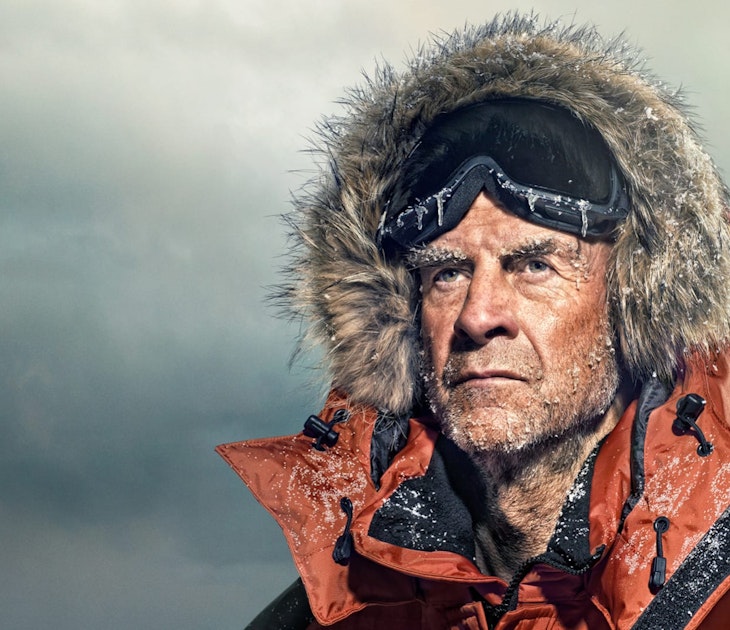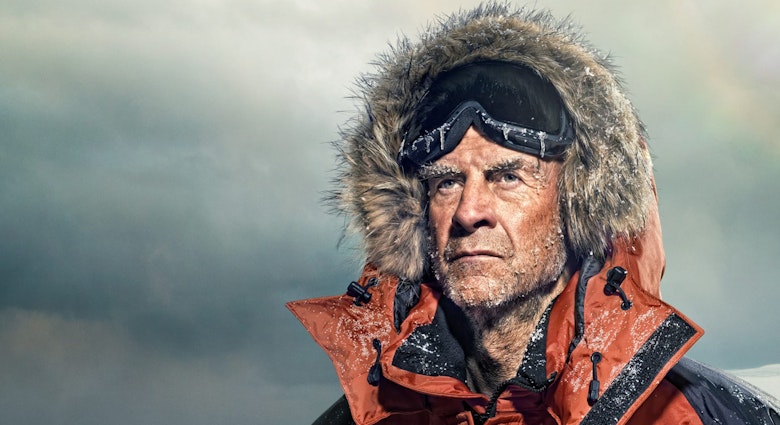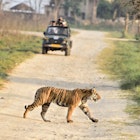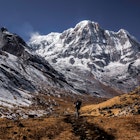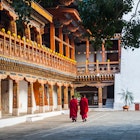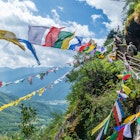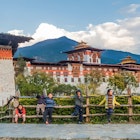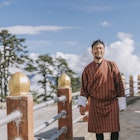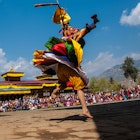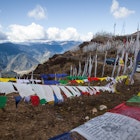Both offer incredible mountains, deliciously spicy food and unique cultures to discover. But which should you visit?
Be warned: both Bhutan and Nepal are likely to destroy your captivation-o-meter. It will explode at the mountainside monasteries. Clap out on once-in-a-lifetime treks. Shatter on the mere arrival at either Himalayan kingdom. So when it comes to picking either Bhutan or Nepal to visit, which is the best destination for you?
Two Lonely Planet writers put the case forward for each.
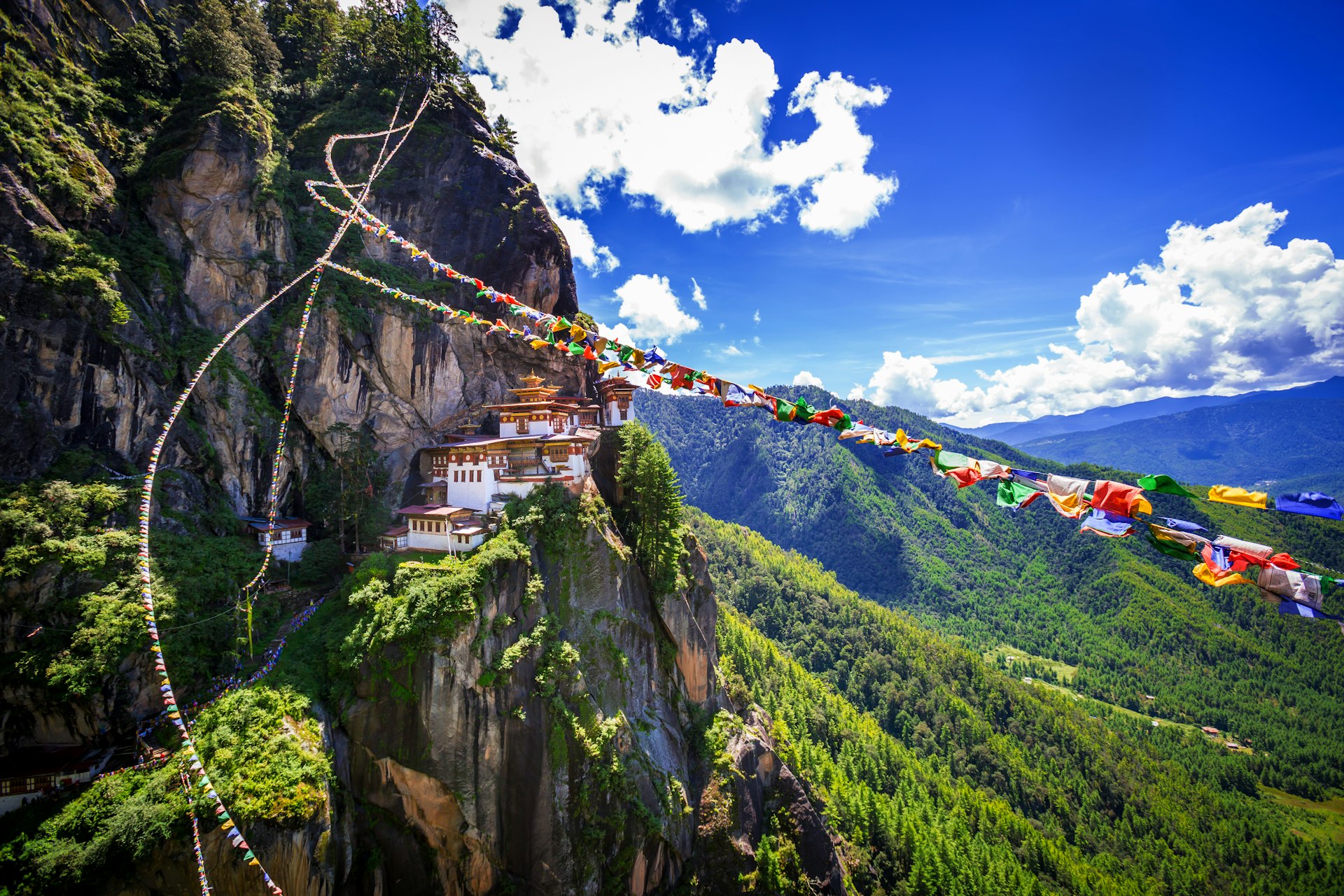
Skip Nepal and visit Bhutan instead
Bhutan expert Erin Levi first visited Bhutan more than a decade ago as a guidebook writer, which kept her there for over three months. Her connection to the country now transcends borders.
Long romanticized as the “Last Shangri-La,” Bhutan is the last Buddhist kingdom on Earth and the remote Himalayan neighbor to overrun, oft-chaotic Nepal. Peace is what most people will find here amongst the flickering butter lamps inside temples and colorful prayer flags that adorn the mountain passes. With a giant gilded Buddha looming over the capital Thimphu and monasteries gripping cliffs, this reclusive nation of fewer than 800,000 inhabitants stands resiliently between Communist China and largely Hindu India.
The “Land of the Thunder Dragon,” (Druk Yul in Bhutanese) is a magical place where the rice is red and tigers can “fly” (as can the cannabis-fed pigs, Bhutanese people like to joke). This is where happiness is measured instead of GDP and the progressive royal family is beloved. Fertility issues here are still resolved by the “Divine Madman” and his legendary phallus, which is vividly reimagined everywhere, whether hanging above doors or painted on houses.

Sure, Nepal is the “Top of the World’” thanks to Mt Everest (Sagarmatha) and seven other 8000m-plus (ca 26,250ft) peaks, but Bhutan is home to the highest unclimbed mountain on earth, the 7570m-high (24,836ft) Gangkhar Puensum.
Bhutanese law prohibits mountaineers from climbing any mountain above 6000m (19,685ft) to protect the deities. According to Bhutanese beliefs, mountains are sacred homes to spirits. Following the viral Mt Everest traffic jam photo – a scene captured by record-breaking climber Nirmal Purja – there’s a case for leaving all mountains untouched. That said, if you want a challenge, the 30-day Snowman Trek in Bhutan is among the world’s hardest and longest.
Bhutan is even home to the toughest airport landing. Nestled amid 5500m (18,045ft) peaks, only 24 pilots and two airlines have the skills to land safely at Paro International Airport. That said, once you’re here, Bhutan is one of the world’s safest destinations. Petty crime is uncommon. Violent crime is rare. Guides are mandatory for all excursions beyond Thimphu and Paro – with female guides available if preferred.

The former hermit kingdom barred foreign visitors until 1974. Then they capped the number of travelers who could visit each year. After that, Bhutan was only accessible to those who bought a package worth at least US$250 a day. When it reopened after the pandemic in 2022, Bhutan started to charge a Sustainable Daily Tariff (SDF) of US$200 per person (except for Indian, Bangladeshi, and Maldivian citizens). It has been halved to US$100 until September 2027, but excludes costs like lodging and a guide. The fee is a vital revenue source that supports Bhutan’s free education and healthcare initiatives.
While some may see these measures as an example of exclusivity and claim it’s only a destination for the ultra-wealthy (it does have far more luxury options than Nepal’s singular Shinta Mani Mustang), the authorities aim to safeguard Bhutan against overtourism and environmental harm. Indeed, Bhutan is carbon-negative, whilst Nepal’s Kathmandu grapples with terrible air quality.
It's worth noting that Nepal has now made it mandatory for trekkers to hire a guide or porter, too. In some restricted regions, like Upper Mustang and Dolpo, visitor permits can now cost up to US$500.
And if that is not a tip of the ol’ Nepali topi (Nepali hat) to visionary recluse, Bhutan, I don't know what is.

Choose Nepal, no question
Shikha Tripathi first visited Nepal as a starry-eyed backpacker tackling the Everest Base Camp trail. Soon after, that trip evolved into a raging love affair with the country and Shikha has returned numerous times, including as an author on the Lonely Planet guide to Nepal.
If visiting Bhutan is the black tie event where you need to mark your presence for social media, Nepal is the after-party where you can kick off your heels, switch to comfortable shoes, and hit the dance floor. This easy-going destination offers more than exclusivity. Much like the Buddhist shrines lined with everything from incense sticks to cola bottles, Nepal’s experiences come in a wide range of offerings.
Let's start with the indisputable draw of Nepal, its eight-thousanders. Travelers come to get up close and personal with these 8000m-plus (ca 26,250ft) peaks, whether it’s climbing them, hiking to their base camps, or simply hopping on an Everest flight to get a good view of the superstar mountain. And before you think that Nepal is all about backpacking and teahouses – not that the latter is anything less than an immersive, cultural experience – you will be stumped by where it can take you.

The lure of Nepal lies in the power of choice it offers to the traveler. You could pick remote trails or go camping in the wilderness of Mustang with a Snowcat. You could pop champagne with your private-chef-curated dinner after a summit attempt (yes, Asian Trekking does that). Nepal is a country synonymous with the great outdoors, so even if hiking is not quite your thing, there are still enough ways to rummage through its treasure chest. Gawk at prehistoric-looking rhinos in Chitwan National Park. Paraglide in Pokhara for a bird’s-eye view of the Fewa Lake, or hit the rapids of the great Kali, the deepest river gorge in the world.
The best part is that you can take your time to savor the Himalayan kingdom – there is no exorbitant daily fee to be paid like its well-meaning neighbor. You can also create an itinerary and stay flexible because there is no need to follow a designated trail fixed by the authorities as in Bhutan.

For a country barely half the size of Nevada, Nepal packs in extraordinary diversity – and not just in its habitat and elevations. Spiraling down from the highest mountains to its Terai forests and rivers, there are all shades of cuisine, culture, dresses and dialects, a big section of which branches off from its sizable Buddhist population.
Stay in a US$40 guesthouse in the heart of Kathmandu’s buzzing Thamel district choking with cafes, bars and vibrant shops to feel the pulse of the traveler area, or live like royalty in a US$400 boutique hotel close by. The common thread running through its diversity is that Nepal is one of the rare South Asian countries that was never colonized, and has the highest Hindu population by percentage in the world. Both factors have resulted in some stellar architecture that you see in its multiple UNESCO World Heritage Sites. To discover more of its rural architecture, head out to smaller villages like Bandipur or Nuwakot, which have traditional homes, restored and run as delightful, old-world inns.

Food lovers will find everything from the finest wood-fired pizzas in upmarket cafes to chatamari (a Newari rice crepe), Kathmandu’s answer to the French staple. Then there's dim sum in Chinese restaurants and food stalls overflowing with their street-food cousins, momos (Nepali dumplings). Authentic Nepali cuisine is often paired with traditional cultural shows here – a great example of touristy things done right. If you want to challenge your spice level tolerance, eat local. You may enjoy it, complete with tears of joy. Then you will realize that Nepal is a power-packed chili in itself – a tiny fire starter.
It may not have the precision of Bhutan, but true to the democracy it is today, Nepal welcomes a world of different ideas while fiercely guarding its singular cultural identity. What’s not to love?



